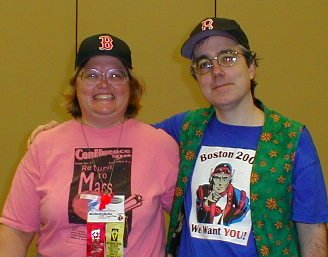Wintersmith by Terry Pratchett
Tiffany Aching first appeared in The Wee Free Men. There, she first encountered the Nac Mac Feegles – the Pictsies – the small, kilt-wearing, hard drinking, brawling, little blue men, who decide that she is the wee big hag – their witch – to whom they have a geas (a a very important obligation, not a bird). In that book, Tiffany begins her journey toward becoming a powerful witch, one she continues in A Hat Full of Sky and into the current novel. Along the way she grows – not as much (or not just) in power, but in knowledge and character, as she learns that being a witch isn’t usually about magic at all, but about listening to people, about sitting up with those who are dying and helping mothers giving birth and even helping to bring young lambs or calves into the world.
But, in Wintersmith, Tiffany has made a mistake. While watching a group of dancers ushering in the winter season, she joins the dance. In doing so, she inadvertently takes the place of the elemental queen of summer and attracts the attention of the elemental force of Winter – the Wintersmith. The Wintersmith is fascinated by her and attracted by her – and falls in love with her. Yet, as a force of nature, he doesn’t understand what that means. He’s never even really thought before. He’s much like a very immature young boy with the power of a god, who tries to win Tiffany by making all the snowflakes look like her and creating icebergs in her image. But in the process, he’s also brought perpetual winter on the land, a winter that can and eventually will spell disaster for everyone.
Tiffany, in part under the watchful eye of Granny Weatherwax and Nanny Ogg, but in part just using her own natural good sense, must learn what to do and in the end stand up to the Wintersmith. She must also learn much more about life and about being a witch – including learning that in the end it matters only that people are helped and the right things happen. In one very well done and moving section of the novel, Tiffany must help a young witch – one who is snotty, arrogant, and stuck up on her own rather new-age approach to magic – cope with a job which she didn’t deserve have gotten in the first place and who in the end will never acknowledge the help. It’s a wonderful learning experience for Tiffany, as well as a probing look by Pratchett into both Tiffany’s character and into what is important in life.
Along the way, Pratchett pulls in a number of wonderful characters. I’ve always liked his witches – who are far wiser, and far more interesting than his wizards (the latter are at their best when they are minor characters in books focused on other, more interesting characters) – and Wintersmith gives us a lot of both the stern, scary, but ultimately wise and humane (though she wouldn’t like that description) GrannyWeatherwax and the earthy and always amusing Nanny Ogg.
And, of course, there are the Feegles. I must admit that I slow down at every scenes involving Feegle dialog and am tempted to read it aloud (and at times I do; thank goodness I no longer commute on the bus, or people would think I was guilty of cackling). Rob Anybody and his brother Daft Wullie (who is one of Pratchett’s funniest characters), Wee Dangerous Spike, and the others, who speak in thick Scottish accents of a sort, whose favorite pastimes are drinking and fighting (usually, but not always, in that order), and who consider themselves to be true heroes – when facing danger, death, dragons, and demons, anyway (though not when forced to spell “marmalade” or when having to explain what they’ve been up to their wives and mothers) – are a wonderfully entertaining and likeable bunch.
Everyone has their favorite Discworld sub-series. Mine is still the City Guard (Guards, Guards etc.), but the Tiffany Aching books are rapidly catching up with the adult witch books (Equal Rites, Weird Sisters, etc.) for second place. I look forward to more in this series (but then I look forward to more of whatever Pratchett wants to write).


0 Comments:
Post a Comment
<< Home